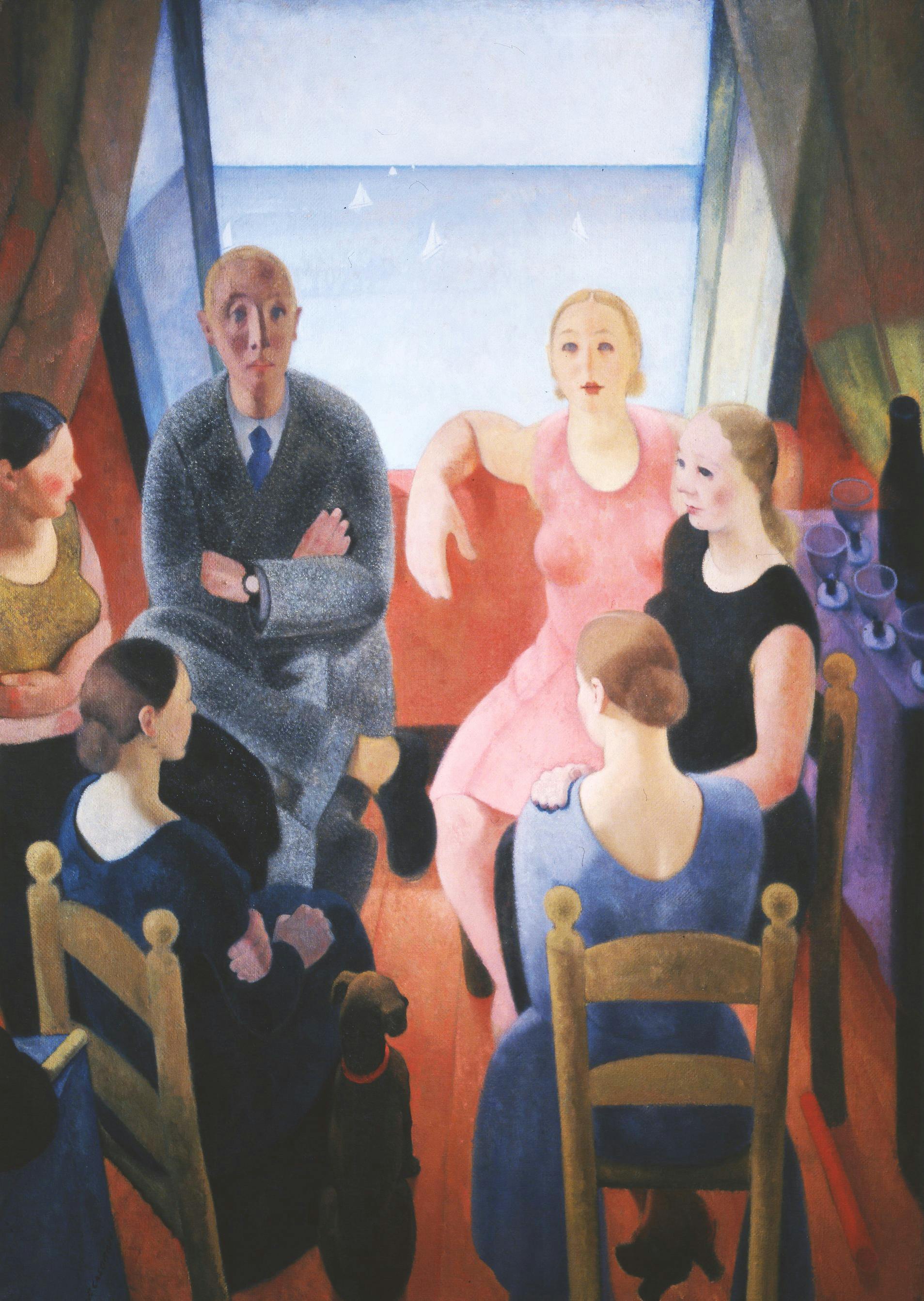The Stranger
Felice Casorati (Novara 1886 - Turin 1963)
Bottom left: “F. Casorati”
Illuminated by an unreal light and framed by an alienating perspective, the scene appears as if suspended in a dimension beyond time: an impenetrable silence seems to have fallen, similar to the feeling of alienation of the only man present among the chatting ladies. The work can be dated back to the end of the 1920s, when Casorati’s compositions began to present a palette of soft, ultra-low-key colours, playing with pastel shades. The background with its flat colours and the perspective that tends to tip over onto the spectator, are combined using plastically defined shapes, accentuating the alienating effect as enigmatically referred to in the title.
In 1930, the painting was chosen at the 17th Venice Biennale by Ugo Ojetti and Antonio Maraini, members of the Purchasing Commission for the Gallery of Modern Art in order to add to the collection of 20th century works artists whose works were still not included. Casorati was one of the leading lights of the type of Italian art that, after breaking with the figuration of the avant garde in the early decades of the century, recovered his representations of reality by looking to the masters of the past (from Giotto to Piero della Francesca, Masaccio…) although using a language that tends towards a sort of dreamlike abstraction, as in this painting. In the words of the commissioners, the painting was judged to be illustrative of the “transfusion of reality into the fantastic” which was typical of “Magic Realism”, the current of painting that he joined during the 20s and the largest 20th-century movement in Milan, formed around the charismatic figure of Margherita Sarfatti.
